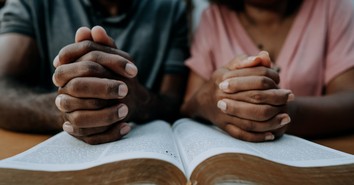5 Symbols of Thanksgiving to Prompt Gratitude

What do bread, vines, water, doors, branches, and harvests have in common? During His life on earth, Jesus pointed to all these symbols—and many more—to illustrate spiritual truths.
Bread reminds us that Jesus is the spiritual nutrition we need to daily to remain healthy. The image of a vine nudges us to stay connected to abundant life in Christ. Golden fields of wheat help us recall people God has prepared to receive the gospel message of Jesus.
In the same way, our symbols and traditions at Thanksgiving can remind us of God’s character and prompt gratitude for His blessings.
Photo credit: ©GettyImages/Artsyslik
1. Cornucopia
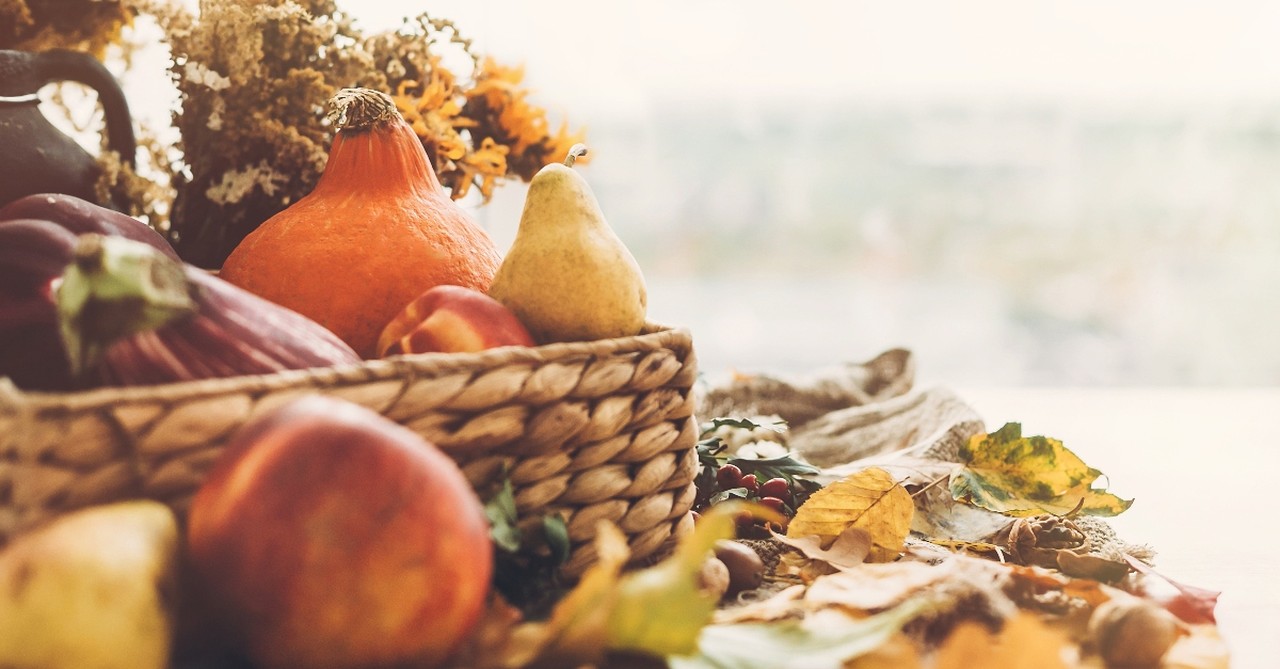
1. Cornucopia
SLIDE 1 OF 6
We derive “cornucopia” from two Latin words that mean “horn of plenty.” As a centerpiece on our Thanksgiving tables, this horn-shaped basket overflowing with fruits, vegetables, nuts, and flowers reminds us of the abundance of God’s provision.
The horn of plenty also hearkens back to the Old Testament when God used Moses to lead His people out of slavery in Egypt. God spoke through Moses to tell the people how they should live and carry out His purposes as His chosen people. He explained how He would one day settle them in their own land that would produce crops to sustain them.
God told the Israelites to gather the first produce at the beginning of each harvest into a basket and bring it to their place of worship. “Go to the priest in charge at that time and say to him, ‘With this gift I acknowledge to the Lord your God that I have entered the land he swore to our ancestors he would give us.’ The priest will then take the basket from your hand and set it before the altar of the Lord your God” (Deuteronomy 26:3-4 NLT).
The cornucopia on our Thanksgiving tables reminds us that all we have comes directly from God’s hand. He provides our tangible needs—food, water, clothing, and shelter. With His presence, He also fulfills every spiritual need. We have His loving kindness, guidance, protection, salvation, and assurance of an eternal future with Him. Without His provision, we would have nothing.
When we fill our cornucopias this Thanksgiving, let’s remember to thank God who “will supply all your needs from his glorious riches, which have been given to us in Christ Jesus” (Philippians 4:19 NLT).
2. Stuffed Turkey
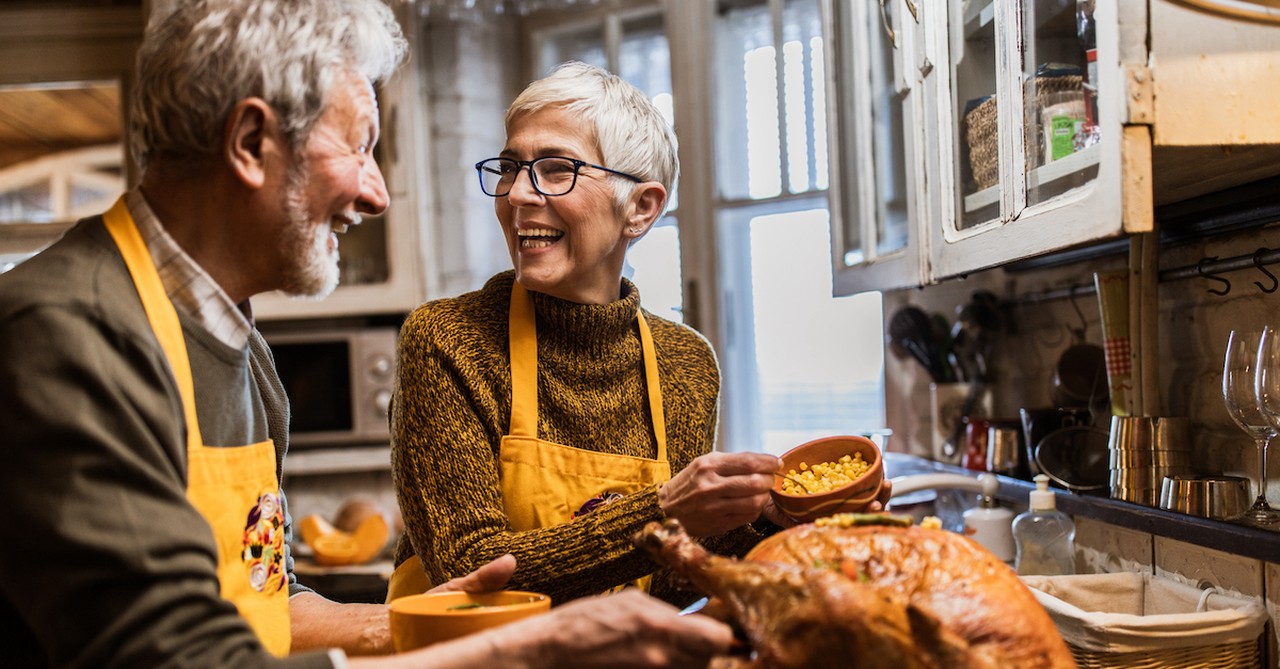
2. Stuffed Turkey
SLIDE 2 OF 6
I wonder who first came up with the idea to stuff a turkey. Perhaps a mother with many mouths to feed and limited stove space took advantage of the cavity inside the twenty-pound bird to prepare one of her side dishes.
Imagine the woman chopping celery, onions, and herbs to sauté before mixing with dry bread cubes. Maybe her children helped with the tasks and then carefully spooned the savory mixture into the turkey. After hours of roasting, the scent of sage, thyme, and rosemary permeated their home.
Depending on where you live, your stuffing recipe may vary from mine. Some people use cornbread as a staple. Others add sausage, oysters, rice, apples, cranberries, or parmesan cheese. These variations offer delicious culinary options that tickle the palate.
As we consider the ingredients to include in our stuffing, remember the ingredients God tells us to put into our minds to produce the scent of holiness in our lives. “And now, dear brothers and sisters, one final thing. Fix your thoughts on what is true, and honorable, and right, and pure, and lovely, and admirable. Think about things that are excellent and worthy of praise” (Philippians 4:8 NLT).
What are some ingredients best left out of our thoughts? “Let all bitterness and wrath and anger and clamor and slander be put away from you, along with all malice” (Ephesians 4:32 NASB1995).
These days, food experts recommend cooking the stuffing outside the bird. Whichever way we prepare our turkeys, let’s remember to fill our minds with God’s best so our lives reflect our excellent and praiseworthy God.
3. Pilgrims
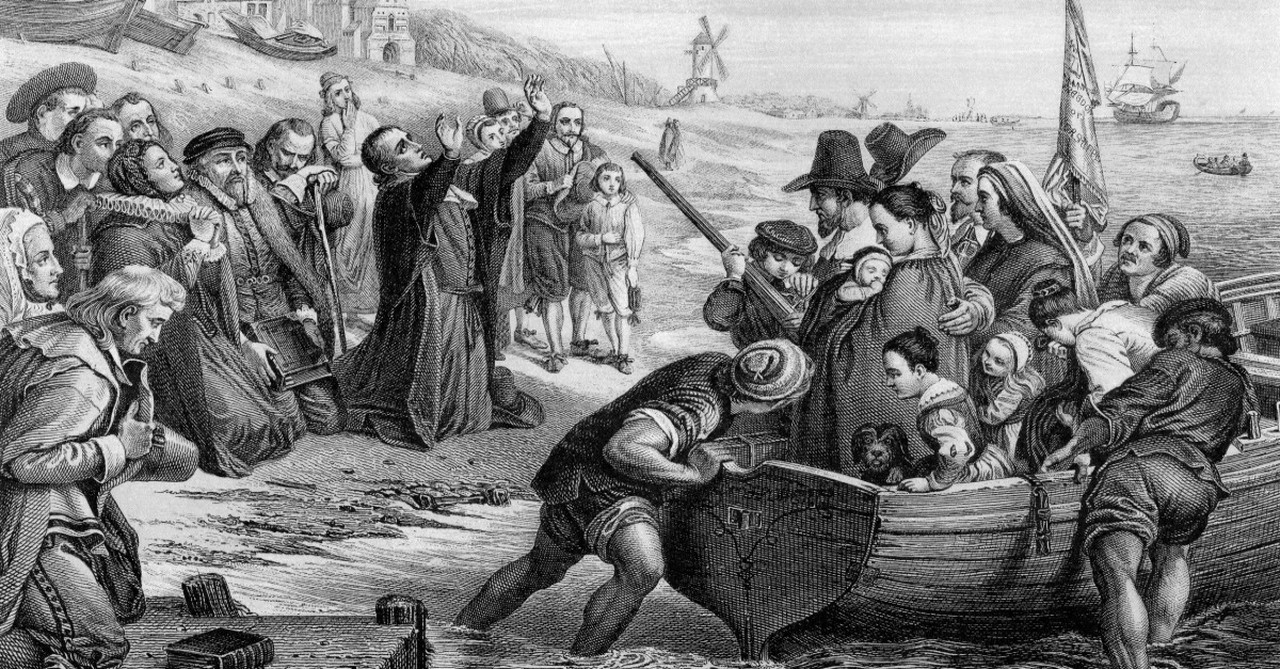
3. Pilgrims
SLIDE 3 OF 6
When we decorate our homes with cheerful Pilgrims at Thanksgiving, we don’t think much about God’s providence that orchestrated their steps and their rescue.
About half of the 102 courageous men, women, and children who landed in Plymouth, Massachusetts didn’t survive their first winter on the North American continent. The remaining colony seemed doomed to extinction.
God provided Squanto, an American Indian with a remarkable story. Kidnapped as a boy from his native Wampanoag Tribe, he was transported to Europe to be sold as a slave. Monks paid the price to redeem him. Then they took him in and educated him. When he grew up, he returned to his homeland by way of England, where he learned to speak English. In God’s providence, Squanto had previously lived near where the Pilgrims settled.
When Squanto heard of the desperate plight of the Pilgrims, he helped them to survive. He taught them how to plant crops and fish. He also established good relations between them and the tribes in the region. The cooperative feast between the Pilgrims and Natives in 1621 established the precedent for our tradition of Thanksgiving.
The imagery of Pilgrims at Thanksgiving might remind us of their courage and faithfulness. But their story should also prompt us to think of God’s providence—the certainty that He will orchestrate “everything that needs to be done to bring about His purposes.”
God spoke comforting words about His providence through His prophet Isaiah. “Only I can tell you the future before it even happens. Everything I plan will come to pass, for I do whatever I wish. I will call a swift bird of prey from the east—a leader from a distant land to come and do my bidding. I have said what I would do, and I will do it” (Isaiah 46:10-11 NLT).
The story of the Pilgrims and Squanto prompts us to observe God’s providence within our own stories. We can be sure His hand of providence will coordinate events to bring about His purposes in our lives too.
Photo credit: Getty Images/TonyBaggett
4. Colorful Leaves

4. Colorful Leaves
SLIDE 4 OF 6
Nothing beats the fall landscape. Trees splash canopies of bold reds, yellows, and oranges against a clear sky. We revel in relief from summer’s torrid temperatures, but the crisp air also reminds us that winter is lurking around the corner. Those leaves will soon fall and become crunchy fodder for children to jump in.
At Thanksgiving, I like to bring the beauty of Autumn leaves to my porch and inside my home. A bright garland and wreath on the door welcome guests. Some years, my kids and I made placemats from pressed leaves. Other times, we arranged leaves in vases for table decorations.
In Genesis, God promised Noah the predictability of the changing seasons as evidence of His faithfulness. “As long as the earth remains, there will be planting and harvest, cold and heat, summer and winter, day and night” (Genesis 8:22 NLT). Fall is a final display of foliage before the deadness of winter, but we can be sure winter will eventually relent and give way to spring’s new life.
We can also infer that God has a purpose for us in every season of life. Some may be more active, while others are more restful. Some seasons, we linger in loneliness, while in others we may be overwhelmed. In every circumstance, God is faithful to us. He promises to stay close, always providing for our needs.
I find it interesting that leaves become most brilliant just before they die. Can we say our lives grow more faithful to God and bolder in expressing His glory with each passing year? “Let us hold tightly without wavering to the hope we affirm, for God can be trusted to keep his promise” (Hebrews 10:23 NLT).
5. Cranberries

5. Cranberries
SLIDE 5 OF 6
Cranberries on our Thanksgiving dinner plates add zest to the milder flavors of turkey and stuffing. I have two favorite recipes. One cooks the berries with pears, orange juice, and sugar. The other combines raw cranberries with apples, oranges, crushed pineapple, and a bit of sugar to taste. The deep red berries also bring a pop of color and flavor to breads and cookies.
Native to the New England area, cranberries grow well in wetlands. Sand spread over the bogs enhances their growth and prevents pests and weeds. In the right conditions, the hardy plants survive indefinitely, even through harsh winters. In fact, some 150-year-old vines on Cape Cod still produce fruit.
The tenacity of cranberry vines reminds us to stay connected to Jesus. He said, “Remain in me, and I will remain in you. For a branch cannot produce fruit if it is severed from the vine, and you cannot be fruitful unless you remain in me” (John 15:4 NLT).
How do we remain in Christ? The cranberry gives us a hint. If the branches stay attached to the main vine, they receive sustenance and flourish. Likewise, we must rely on Jesus as the source for everything we need in life. If we separate from Him and depend on ourselves, we will wither and cease to produce good fruit.
This Thanksgiving, when we serve cranberries, let’s ask God to show us any area of our lives where we could strengthen our reliance on Him.
Gratitude
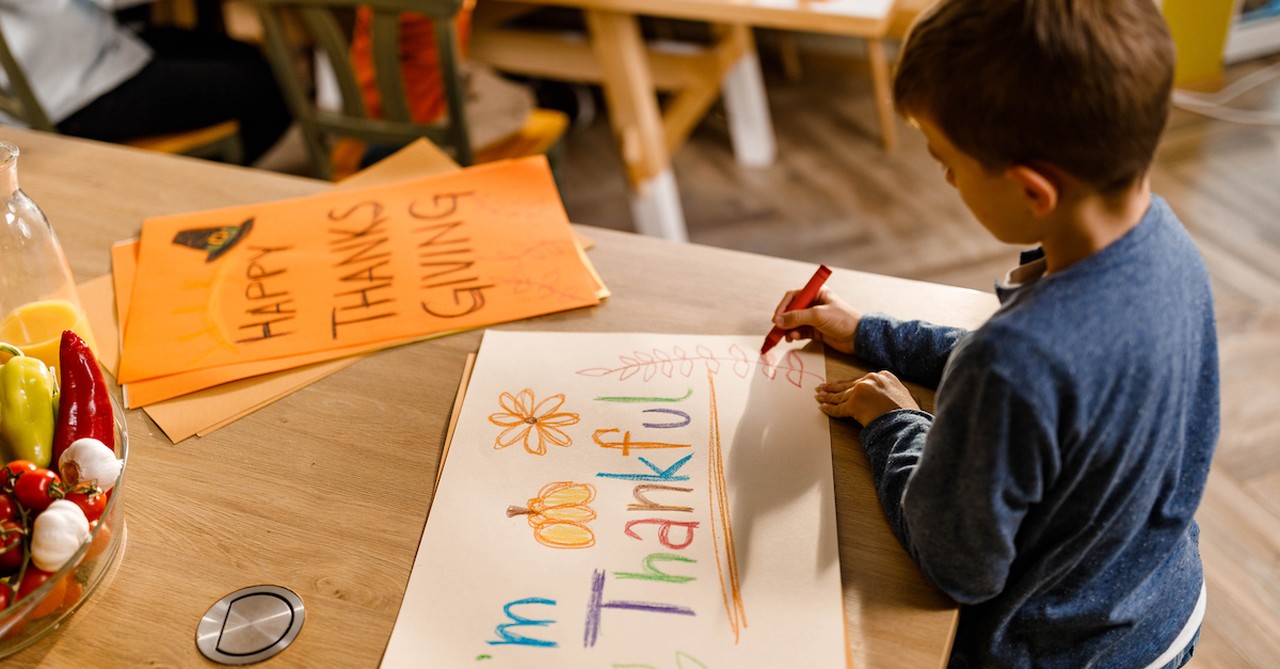
Gratitude
SLIDE 6 OF 6
In the season of Thanksgiving, our symbols inspire gratitude to God, who loves us and generously gives according to His riches. “Give thanks to the Lord, for he is good! His faithful love endures forever” (Psalm 107:1 NLT).
Can you think of any other symbols and traditions of Thanksgiving to add to my list?
Note: If the symbols of Thanksgiving have helped you to give thanks and praise to God, be sure to check out my new Christmas devotional, 25 Symbols of Christmas: Finding Jesus. Each daily devotion illustrates how a symbol or tradition directs our attention and devotion to the Savior born in Bethlehem.

Related Resource: Strengthening Your Marriage While Raising a Child with Disabilities
In this episode of Empowering Homeschool Conversations, your host Annie Yorty and her special guests dive into the unique challenges and beautiful complexities of maintaining a strong, loving partnership while navigating the demands of special needs parenting. Our expert guests bring a wealth of knowledge and personal experience to the table, offering invaluable insights and practical strategies for fostering resilience, connection, and joy in your marriage. Whether you're homeschooling parents seeking support, or simply looking for ways to strengthen your relationship amidst life's challenges, this conversation promises to provide the inspiration and tools you need to thrive together. Listen now!
Originally published November 08, 2024.




